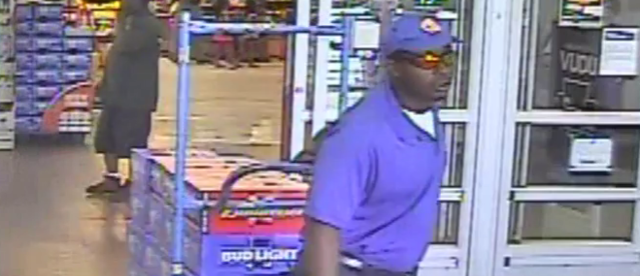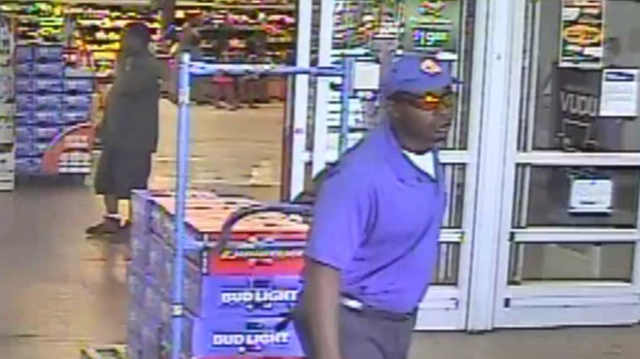The Reverse Beer Delivery


To consumers, supply chains are typically invisible. We don’t really care about how the auto manufacturer gets its car parts — we care about the car. It doesn’t matter how Amazon gets all the stuff that we buy from it; what matters is that Amazon has it and can send it to us. And when we go to the grocery store, it’s actually a net negative for us if a double-parked delivery truck is blocking the entrance or if the delivery guy is lumbering through the store with his cart.
But deliveries are necessary if we want there to be stuff to buy, which is what made the efforts of the man pictured above successful — at least initially.
Beer deliveries are straightforward: a delivery guy drives a truck full of beer to the store, unloads some product onto a cart, wheels the cart into the store, maybe puts the cases of beer right on the shelves himself, and then wheels his cart back to the truck and goes off to the next store. The picture above looks like one of those regular deliveries. There’s a guy, in uniform. He’s pulling a cart loaded with Budweiser and Bud Light. Behind him are shoppers, shopping. It’s not something you’d normally even bother to take a picture of, which actually helps explain why the picture above is so grainy. It’s not a photo at all — it’s a screenshot of security camera footage.
And if you look carefully, you may see why. See the man behind him, wearing shorts and a t-shirt? That guy is clearly inside the store — there’s a display tower of boxes next to him, a wall of produce behind him, and a visible set of doors toward the front. Our delivery man, though, is on the other side of those doors, walking out. That doesn’t make a lot of sense: if he was making a beer delivery, he’d be walking into the store. But he’s exiting, which suggests his delivery is done. So why does he still have beer on his cart?
Oh.
Darrius Williams, the man allegedly pictured above, wasn’t making a delivery. He was doing some large-scale shoplifting, according to authorities. As the Atlanta Journal-Constitution reported, Williams allegedly “posed as a delivery driver and entered grocery stores with a large cart.” Then, “he loaded up the cart with cases of beer and soda and rolled the cart out of the store, where he placed the items in his car.” And then he drove away. (A video of his exit from the store can be seen, here.)
This wasn’t the only store struck by a fake beer delivery guy, either. According to Alabama news website AL.com, several other stores in the area reported falling victim to a similar ruse orchestrated by a man matching the same description as seen above. It was, almost, the perfect beer heist. While the suspect was actually pulling off his little heist, no one thought anything of it — at least, not until they realized that there was a lot of beer missing from the shelves. But by that time that happened, he was long gone.
His big mistake was, it appears, that he got a bit too greedy. Had he not hit the store from which the screenshot above came, he probably would have gotten away with it, but alas, the camera remembers everything. The culprit was likely caught (assuming he was properly identified), but his fate — fate — and the beer that he creatively stole — has gone unreported.
Bonus fact: Free beer — when it’s not stolen like in the case above, at least — can be a good way to encourage altruism. In 2011, the Bridge Hotel in Australia rolled out something called the “karma keg” — a free opportunity to drink to you’re heart’s content, but with a twist. While the price was, officially, zero, the organizers encouraged imbibers to make a donation to one of a handful of charities. According to The Age, the idea worked better than expected, raising a bit more on average than one would have gotten under a traditional pricing scheme: “A keg of Carlton Draught normally returns about $650. Over the past three Fridays, Bridge Hotel drinkers have donated $800, $860 and $700.”
From the Archives: Beer Bricks: How one beer magnate tried to turn empty beer bottles into full houses.
